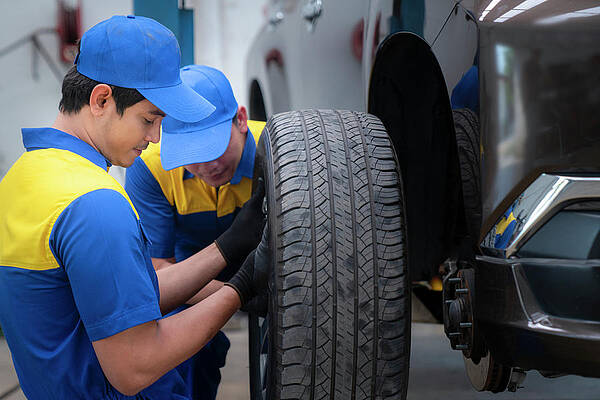Dealing with Tyre Puncture Woes
Introduction:
Few automotive mishaps are as universally frustrating as a sudden tyre puncture. Whether it's during a leisurely drive or a crucial journey, the inconvenience and potential danger of a flat tyre can't be overstated. However, armed with knowledge and preparedness, you can transform this unexpected setback from a catastrophe into a mere inconvenience. In this guide, we'll delve into the causes of tyre punctures, prevention measures, and step-by-step procedures for handling them efficiently.
Understanding Tyre Punctures:
A tyre puncture occurs when an object penetrates the tyre, causing air to escape and resulting in a loss of pressure. Common culprits include nails, screws, glass shards, and sharp stones found on roads. Additionally, punctures can also result from a weakened or aged tyre structure, leading to cracks or leaks.
Prevention Measures:
While some punctures are inevitable, proactive measures can significantly reduce their occurrence:
1. Regular Inspection: Routinely check your tyres for signs of wear, embedded objects, or damage.
2. Proper Inflation: Ensure your tyres are inflated to the manufacturer's recommended pressure levels. Under-inflated tyres are more susceptible to punctures.
3. Avoid Hazards: Steer clear of construction sites, debris-laden roads, and areas prone to sharp objects.
4. Quality Tyres: Invest in high-quality tyres with robust construction and puncture-resistant features.
5. Defensive Driving: Maintain a safe distance from vehicles, especially those carrying loose cargo that could potentially cause punctures.

Identifying a Puncture:
Recognizing a tyre puncture early can prevent further damage and ensure safety:
1. Sudden Loss of Pressure: If you notice a rapid decrease in tyre pressure or a noticeable change in vehicle handling, it could indicate a puncture.
2. Visual Inspection: Look for signs of damage, such as nails or screws embedded in the tyre tread, or bulges indicating internal damage.
3. Dashboard Warning: Modern vehicles equipped with tyre pressure monitoring systems (TPMS) will display a warning light if tyre pressure drops significantly.
Handling a Tyre Puncture:
When faced with a punctured tyre, follow these steps to address the issue effectively:
1. Safety First: Find a safe location away from traffic to stop your vehicle. Switch on hazard lights and engage the parking brake.
2. Assess the Damage: Inspect the tyre visually to determine the extent of the puncture and assess whether it's safe to attempt a repair.
3. Remove the Wheel: Loosen the lug nuts with a wrench, raise the vehicle using a jack, and remove the wheel from the axle.
4. Locate the Puncture: Submerge the tyre in water or apply a soapy solution to identify the location of the leak by observing bubbles.
5. Repair or Replace: Depending on the severity and location of the puncture, you can either patch the tyre using a plug or replace it with a spare wheel.
6. Reinstall the Wheel: Secure the wheel back onto the axle, tighten the lug nuts in a star pattern, and lower the vehicle to the ground.
7. Inflate and Inspect: Use a tyre pressure gauge to inflate the repaired tyre to the recommended pressure level and conduct a final inspection for leaks or abnormalities.
Conclusion:
While a tyre puncture can disrupt your journey, it doesn't have to derail your plans entirely. By staying vigilant, practicing preventive measures, and knowing how to respond to a puncture effectively, you can minimize downtime and ensure a safer driving experience. Remember, preparedness and swift action are the keys to overcoming the inconvenience of a flat tyre and getting back on the road with confidence.


No comments yet